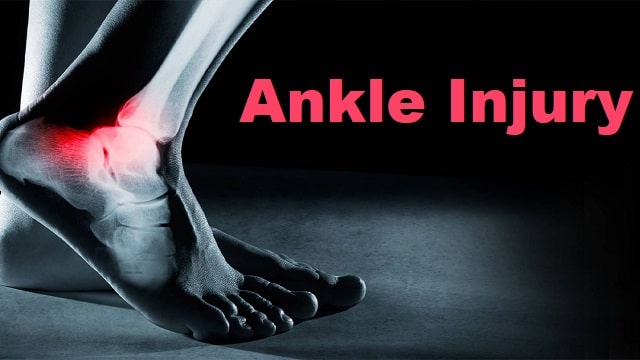Ankle Injury
Ankle sprains are disorders that occur when the ankle twists in an abnormal way. This problem can cause stretching or tearing of the ligaments, which are the parts that help hold the ankle bones together.
Symptoms of Ankle Injury
There are several symptoms that are felt when experiencing an ankle injury, such as:
- A feeling of pain, especially when bearing weight on the affected leg.
- Experiencing swelling in the feet or ankles.
- Feeling bruised.
- Limited range of motion of the legs.
- Feeling of instability in the ankle.
- Hearing a sound in the injured leg.
Causes of Ankle Injuries
Ankle injuries can occur when the ankle is forced out of its normal position. This causes stretching, partial tearing, or even complete tearing of the ligaments in the ankle.
Some of the causes of this foot disorder are:
- A fall that twists your ankle.
- Landing with the wrong support after jumping.
- Walking or exercising on uneven surfaces.
- Trampled by others.
Risk Factors for Ankle Injuries
There are several factors that can increase a person’s risk of experiencing an ankle injury, namely:
- Actively participating in sports, especially those that involve jumping, pivoting, or rotating movements of the feet. Examples include soccer, tennis, and volleyball.
- Had an ankle injury.
- Having poor physical condition.
- Wearing the wrong shoe size.
Athletes are usually at higher risk for ankle injuries. In addition to ankle injuries, there are other injuries that are often experienced, namely sprains.
Ankle Injury Diagnosis
During a physical exam, your doctor will examine your ankle and lower leg. They will also check the area around the injury to check for tender points and move your foot to determine how severe the problem is.
If it is really severe, a scan using imaging methods needs to be done. This is to ensure the worst conditions such as fractures or other disorders.
Some diagnostic actions that can be taken are:
- X-ray examination.
- Examination with MRI.
- CT scan examination.
- Ultrasonography (USG) examination.
Ankle Injury Complications
Untreated ankle injuries can lead to a variety of complications. These problems can also become worse when the injury occurs repeatedly.
Here are some complications that can occur:
- Chronic ankle pain.
- Arthritis of the ankle joint.
- Chronic instability of the ankle joint.
Ankle Injury Treatment
For the treatment of ankle injuries depends on the severity. The goal of this treatment is to reduce pain and swelling and restore normal ankle function.
Some treatment measures that can be taken are:
1. Home Care
For treatment of ankle injuries, you can apply the RICE method for the first few days:
- Rest: Avoid activities that can cause pain and discomfort, as well as swelling.
- Apply ice: Use an ice pack or soak your foot in ice for 15 to 20 minutes, repeating every 2 to 3 hours.
- Compression: Compress the ankle with an elastic bandage to help stop swelling.
- Elevate your feet: Raise your ankles above your heart, especially at night. This helps in reducing swelling.
2. Consumption of drugs
To overcome the feeling of pain, you can take some over-the-counter pain relievers. Some examples are ibuprofen or acetaminophen.
3. Therapy
Once the swelling and pain have reduced, your doctor may ask you to do some exercises. This is to restore range of motion, strength, and flexibility to your ankle.
4. Operation
If all the measures taken are unsuccessful and the injury does not heal, the doctor may need to perform surgery. Surgery can be done to:
- Repairing ligaments that won’t heal.
- Reconstruction of abnormal ligaments.
Ankle Injury Prevention
To prevent ankle injuries, there are several things that need to be considered, such as:
- Exercise regularly to maintain muscle strength.
- Warm up and stretch before exercising and doing physical activities.
- Pay attention to uneven surfaces when walking or running.
- Don’t force your body when you feel tired when doing physical activities.

